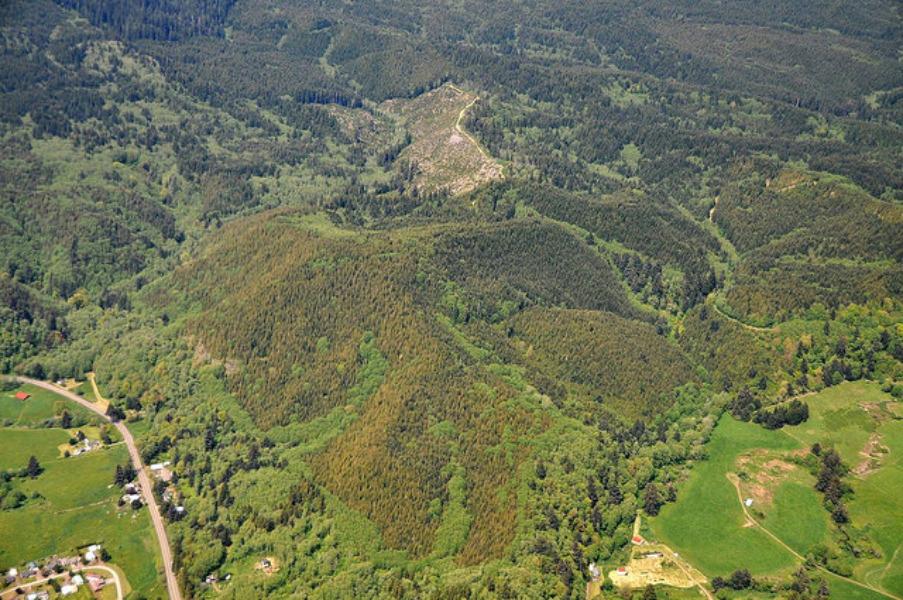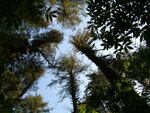
Aerial surveys show the fungal disease Swiss needle cast is now infecting more than four times the forestland it did 20 years ago.
Courtesy of Oregon State University
A new survey finds a growing number of Douglas fir trees in the Oregon Coast Range have been infected over the past decade with the fungal disease known as Swiss needle cast.
Researchers with Oregon State University say the epidemic has grown by as much as 30 percent in a single year.
Though its growth has slowed recently, aerial surveys show the disease is visibly infecting more than four times as much forestland as it was 20 years ago.
Dave Shaw, director of the Swiss Needle Cast Cooperative at OSU, says the fungus plugs openings in the needles that normally carry air and water in and out of the tree.
“It doesn’t kill trees," he said. "The main effect is to reduce productivity and tree growth. So from that perspective it’s not as bad as bark beetles or fire or some of these other things that can kill trees.”

Swiss needle cast slows the growth of Douglas fir trees by plugging openings in the needles that allow water and air to enter and exit the tree.
Courtesy of Oregon State University
However, he says, it can slow the growth of valuable commercial trees by up to 50 percent.
That creates an estimated $128 million dollars in annual economic losses. Shaw's program has mapped the disease's progression through Oregon's Coast Range since 1996.
“Sustained growth losses over the previous 20 years have resulted in millions of dollars in lost timber and tax revenues,” said Gabriela Ritokova, lead author and assistant director of the Swiss Needle Cooperative. “In many cases, mid-rotation stands in the hardest hit areas have remained in an unproductive state, with managers hoping for a reprieve in disease levels.”
In areas where the disease is severe, researchers say the best remedy is planting species other than Douglas fir, such as western hemlock, western red cedar and Sitka spruce. The disease has also been documented in Washington and British Columbia. It is less common inland in the Cascade Range.
Because climate affects where the fungus grows, researchers say climate change may have an impact on how widespread it will be in the future.
“The correlation between disease severity and climate factors, such as spring moisture and warm winter temperatures, raises the question of a link between disease expansion and climate change," Ritikova said.
"Those factors, in combination with lots of Douglas fir and with large springtime fungal spore production, have us where we are now.”
